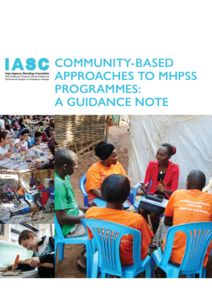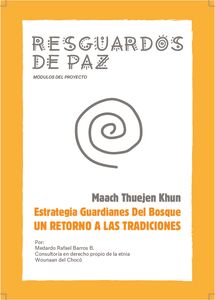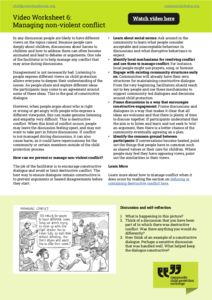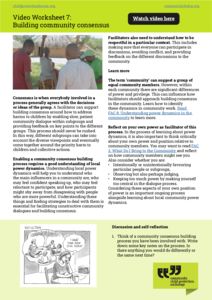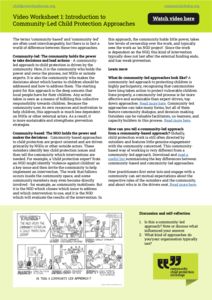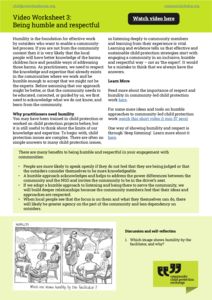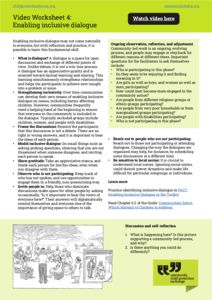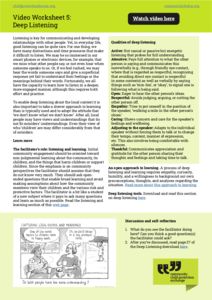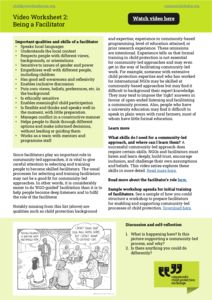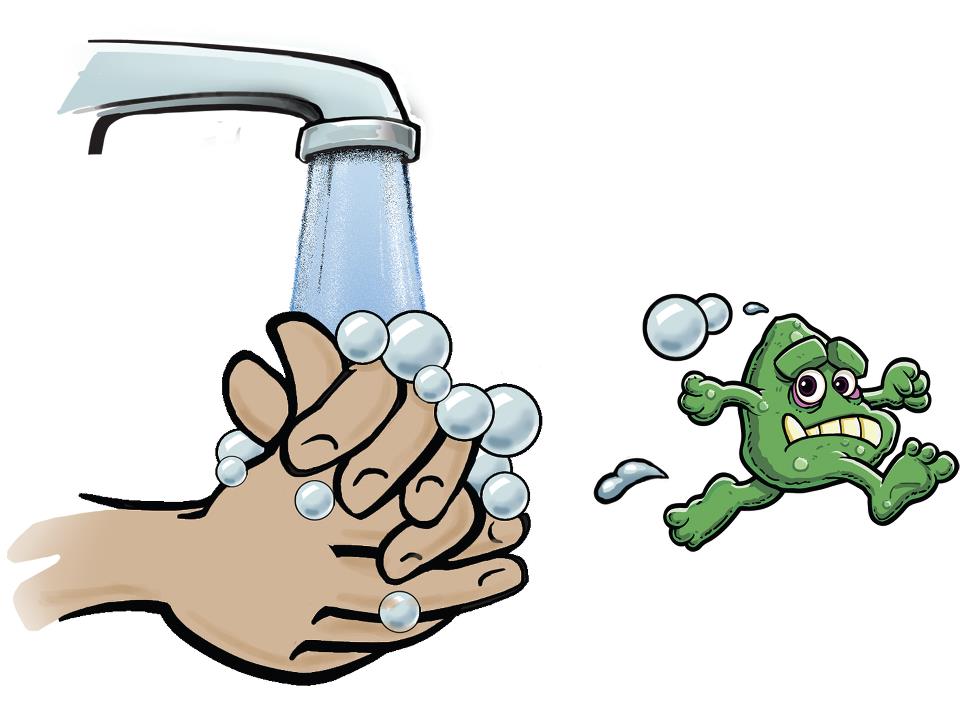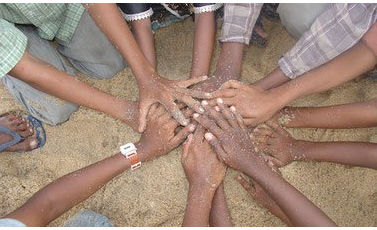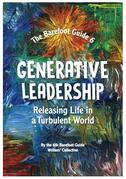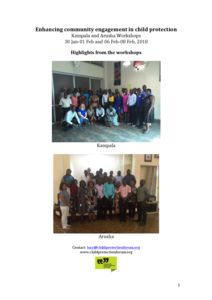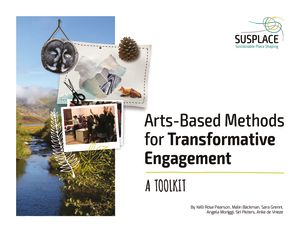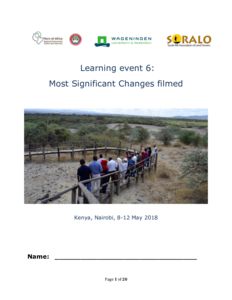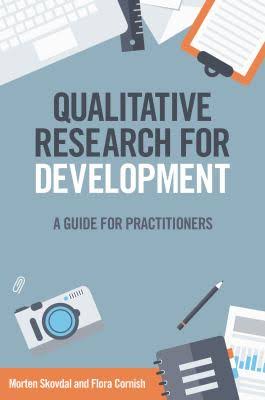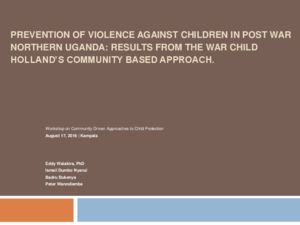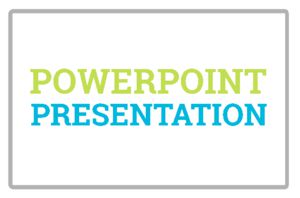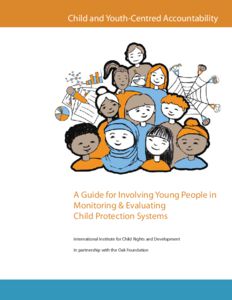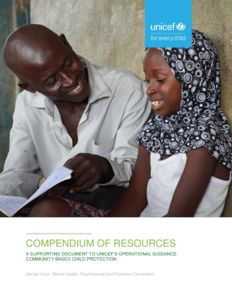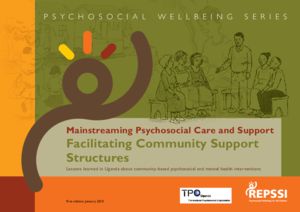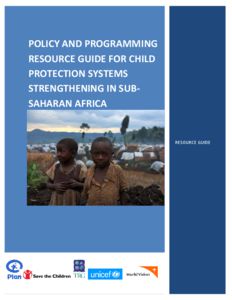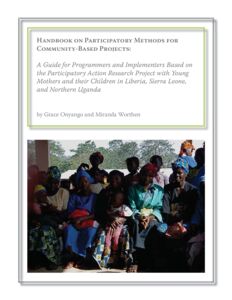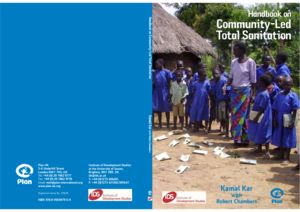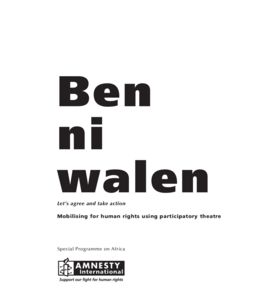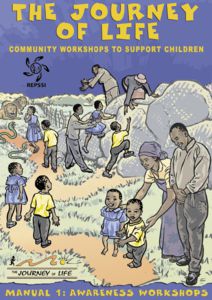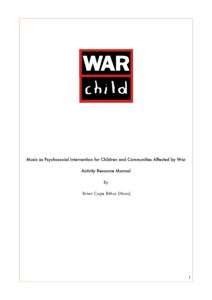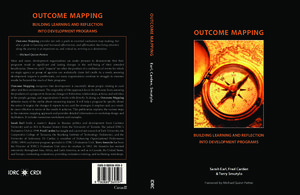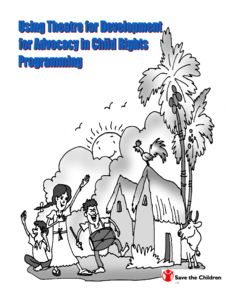Using Whatsapp for radio – a toolkit by the Children’s Radio Foundation
Published: no date
Author: Petit-Perrot, C. and Daniels, L. for Children’s Radio Foundation, South Africa, Cape Town.
A toolkit for using WhatsApp’s Radio Integration Platform, which allows radio content to reach people through WhatsApp on their devices. Written in South Africa, it’s designed to support radio initiatives across the African continent but could in theory be used anywhere where WhatsApp is available. The emphasis of this toolkit is about listeners interacting through conversations, and communities owning the content and shows.
Video for Change impact toolkit
Published: no date
Author: video4change.org
This online resource gives comprehensive instructions as to how to plan and make films with communities. It is a resource which seeks to hand power and control over to communities and as such is a very useful practical guide for anyone wanting to use video to strengthen community engagement and ownership.
COMMUNITY-BASED APPROACHES TO MHPSS PROGRAMMES: A GUIDANCE NOTE
Published: No date
Author: Inter-Agency Standing Committee’s Reference Group on MHPSS in Emergency Settings
Putting communities at the centre of humanitarian MHPSS response enables self-efficacy, reducing the impact of what is “delivered” and enhancing the significance of what is “built” together.
Resguardos De Paz – Módulos Del Proyecto. Maach Thuejen Khun. Estrategia guardianes del bosque, un retorno a las tradiciones
Published: no date
Author: Medardo Rafael Barros B. & War Child Holland, Colombia
Consultoría en derecho propio de la etnia Wounaan del Chocó, Colombia.
Video Worksheet 6: Managing non-violent conflict
Published: May 2022
Author: Community Child Protection Exchange
The sixth video worksheet in the Exchange’s 2022 video series and WhatsApp learning group.
Video Worksheet 7: Building community consensus
Published: May 2022
Author: Community Child Protection Exchange
The seventh and final video worksheet in the Exchange’s 2022 video series and WhatsApp learning group.
WhatsApp Learning Group 2022 – Lessons from Marafa, Kenya
Published: March 2022
Author: Community Child Protection Exchange
This video series offers an introduction to community-led child protection approaches and shares lessons from Ken and Joathem, two experienced facilitators who work in Marafa, Kenya. Follow along with the weekly video series to learn about key principles and skills for community-led child protection approaches, and use the weekly worksheets to reflect on how you could use these approaches in your own child protection work.
Join the WhatsApp learning group and receive the content straight to your phone. Just send a message to +27 787 458 832
Watch Viva Marafa! for a snapshot of a community protecting its children.
Read the background and introduction to the action research in Marafa, Kenya.
What to expect
Every week you will receive a short video and worksheet on your phone.
Each week focuses on a key consideration or skill required for a community-led child protection approach.
Each video comes with a worksheet that you can use for self-reflection or you might decide to form your own reflection group in your office, or your own WhatsApp group. You can invite colleagues to join this group even after the start date.
If you have questions, comments or other things you’d like to share, you are welcome to send them to Lucy. She will answer as many questions as possible and share her answers, your comments and other resources with the group (anonymously). This will include inviting you all to provide input on other participants questions from time to time to learn from diverse perspectives.
Rules of engagement
This group is a broadcast list so you will not see other people’s contact details or who is on the group. You can message Lucy directly of you’d like to share something with the whole group.
You can share any of the content you receive (videos, worksheets and stories) with your colleagues or other people who may be interested.
This group is a safe space. We are all here to learn so feel free to share opinions and ask questions. All questions are good questions!
This learning group is time-bound and will finish the week of 22 May 2022.
You can leave the group at any time for any reason simply by clicking on the Exchange WhatsApp profile then ‘edit’ then ‘delete contact’. Alternatively, ask Lucy to remove you.
We will never share your contact details with anyone for any purpose. We will keep your contact details for future announcements after this group has finished. If you’d like us to delete your details please let Lucy know.
Videos
1. Introduction to community-led child protection approaches (release date: 28 March 2022)
2. Being a facilitator (release date: 4 April 2022)
3. Being humble and respectful (release date: 11 April 2022)
4. Enabling inclusive dialogue (release date: 18 April 2022)
5. Deep listening (release date: 25 April 2022)
6. Managing non-violent conflict (release date: 2 May 2022)
7. Building community consensus (release date: 9 May 2022)
Worksheets
1. Video Worksheet: Introduction to community-led child protection approaches (release date: 28 March 2022)
2. Video Worksheet: Being a facilitator (release date: 4 April 2022)
3. Video Worksheet: Being humble and respectful (release date: 11 April 2022)
4. Video Worksheet: Enabling inclusive dialogue (release date: 18 April 2022)
5. Video Worksheet: Deep listening (release date: 25 April 2022)
6. Video Worksheet: Managing non-violent conflict (release date: 2 May 2022)
7. Video Worksheet: Building community consensus (release date: 9 May 2022)
Summary of action research in Kenya to test community-led models of child protection
Published: March 2022
Author: Community Child Protection Exchange
This summary was developed as a background resource for the Exchange’s WhatsApp 2022 learning group. To read more about this group link here.
Video worksheet 1: Introduction to community-led child protection approaches
Published: March 2022
Author: Community Child Protection Exchange
The first video worksheet in the Exchange’s 2022 video series and WhatsApp learning group.
Video Worksheet 3: Being Humble and Respectful
Published: April 2022
Author: Community Child Protection Exchange
The third video worksheet in the Exchange’s 2022 video series and WhatsApp learning group.
Video Worksheet 4: Enabling inclusive dialogue
Published: April 2022
Author: Community Child Protection Exchange
The fourth video worksheet in the Exchange’s 2022 video series and WhatsApp learning group.
Video Worksheet 5: Deep Listening
Published: April 2022
Author: Community Child Protection Exchange
The fifth video worksheet in the Exchange’s 2022 video series and WhatsApp learning group.
Video Worksheet 2: Being a Facilitator
Published: April 2020
Author: Community Child Protection Exchange
The second video worksheet in the Exchange’s 2022 video series and WhatsApp learning group.
COVID-19: List of practical resources and tools to support community child protection
Published: April 20, 2020
Author: Lucy Hillier for the Community Child Protection Exchange
This list of practical resources and tools supports the guidance developed in April 2020 by the Community-level Child Protection Task Force (Task Force) of the Alliance for Child Protection in Humanitarian Action (Alliance) for child protection actors who are working in or with communities to keep children safe during COVID-19. In turn, the Task Force’s guidance builds on the Alliance’s technical note: Protection of Children during the Coronavirus Pandemic.
As of 20 April, 2020, both of these documents above were in the final stages of completion and will be linked and available here in the coming days. For those who would like to be alerted by mail, please join our mailing list by mailing [email protected].
Protecting Children in Humanitarian Settings Massive Open Online Course (MOOC)
Published: 2019
Author: Columbia University
This online course examines how children’s social environments at different levels, such as the family, community and societal levels, influence children’s adversity, development and resilience. Course participants will engage in critical thought about current international child protection practice and how to strengthen it. The course will invite participants to identify opportunities for using the learning from science and practice, to enrich current child protection approaches in humanitarian settings. Learn more and enroll here.
Barefoot Guide 6: Generative leadership – releasing life in a turbulent world
Published: 2019
Author: 6th Barefoot Guide Writers' Collective
“This book is the fruit of eighteen months of intense, lively collaboration by twenty-three people from seven countries on five continents! It is not about heroic leadership but, quite the opposite, about leadership that works generatively with life.”
This is a big (27MB) download so we’ve linked to the Barefoot Collective’s download page here.
Operational guidelines: Community-based mental health and psychosocial support in humanitarian settings (field test version)
Published: 2019
Author: UNICEF
The operational guidelines are designed and intended to help UNICEF staff and partners support and promote safe, nurturing environments for children’s recovery, psychosocial wellbeing and protection. The guidelines present an operational framework that emphasizes engaging actors at all levels (children, caregivers, families and community service providers) to design and implement MHPSS strategies that
are locally relevant, comprehensive and sustainable in order to more effectively restore, strengthen, and mobilize family and community supports and systems with the ultimate goal of supporting child and family wellbeing in humanitarian settings.
Enhancing community engagement in child protection Kampala and Arusha Workshops – Highlights from the workshops
Published: 2018
Author: Community Child Protection Exchange for the Interagency Learning Initiative (ILI)
A themes-focused report back of the workshops held in Kampala and Arusha 30 Jan-01 Feb and 06 Feb-08 Feb, 2018. These workshops were designed to create the time and space for practitioners in Uganda and Tanzania to reflect deeply on aspects of their own organisation’s community-based child protection work, learn about each others’ work and other evidence and learning, and to think about how they might employ some different approaches moving forward.
Supporting community-led child protection – an online guide and toolkit
Published: 2018
Author: Michael G. Wessells for the Child Resilience Alliance
The terms “community-based” and “community-led” are often used interchangeably, but there is in fact a world of difference between these two approaches. A community-led approach to child protection is driven by the community themselves. Here, it is the community who holds the power and owns the process, not NGOs or outside experts. It is also the community who makes the decisions about which harms to children to address and how to address them...Link to the online guide here.
Arts-Based Methods for Transformative Engagement: A Toolkit
Published: 2018
Author: Pearson, K.R., Bäckman, M., Grenni, S., Moriggi, A., Pisters, S. & de Vrieze, A. for SUSPLACE
A toolkit focusing on sustainable societies and creative, arts-based methods which can help communities work towards the goal of sustainability. This is a book which can inspire you and show you the power of creative approaches in community development, as well as teach you new skills and ways of thinking. The toolkit is Europe-focused and has an emphasis on the environment and nature, but many of its approaches and techniques, as well as its underlying theories, have global relevance and can be applied in different contexts, including child protection.
Learning Event 6: Most Significant Changes Filmed
Published: 2018
Author: The Horn of Africa Regional Environmental Network
A training workshop manual provides guidance on how to collect real-life stories of change from community members by using video as a participatory evaluation tool. The manual provides detailed support on each step and can potentially be used beyond its original purpose to document and tell the story of the impact of a large project or a smaller community-owned action.
Qualitative research for development – A guide for practitioners
Published: 2017
Author: Morten Skovdal and Flora Cornish, Save the Children Fund
A useful guide showing how practitioners can use qualitative research to improve practical programming.
Free download until 28 February 2017! http://dx.doi.org/10.3362/9781780448534 Thereafter contact [email protected]
Barefoot Guide 5 – Mission Inclusion
Published: 2017
Author: The Fifth Barefoot Guide Writer’s Collective
Many organisations, large and small, are tackling the deep challenges of exclusion and coming up with creative, innovative and workable solutions that are putting into practice the policies and strategies that everyone is talking about. This Barefoot Guide, written by 34 practitioners from 16 different countries on all continents makes many of these successful approaches and solutions more visible.
Presentation by Mike Wessells – Kampala workshop, 17-18 August 2016
Published: 2016
Author: Mike Wessells
Mike Wessells’ presentation at the Kampala workshop 17-18 August 2016 where he discusses questions about community driven child protection which keep him awake at night.
Presentation by Eddy Walakira – Kampala workshop, 17-18 August, 2016
Published: 2016
Author: Eddy Walakira
This presentation looks at the results of a War Child Holland initiative in Northern Uganda around prevention of violence against children in a post war setting.
Presentation by Patrick Onyango – Kampala workshop, 17-18 August, 2016
Published: 2016
Author: Patrick Onyango
A presentation on girl mothers in armed forces and groups and their children in Northern Uganda, Liberia and Sierra Leone – Participatory Action Research to assess and improve their situations.
Child and Youth-Centred Accountability – A Guide for Involving Young People in Monitoring & Evaluating Child Protection Systems
Published: 2016
Author: Vanessa Currie and Cheryl Heykoop for International Institute for Child Rights and Development
Child-Centred Accountability and Protection Evaluation (CAPE) is a multi-institutional pilot project focused on assessing how the impact of child protection services and programs addressing sexual abuse and exploitation can be measured and evaluated from a child-centred perspective.
Taking pictures, telling stories and making connections: A Photovoice manual
Published: 2015
Author: Malherbe, N., Cornell, J., & Suffla, S. (Eds.) for Institute for Social & Health Sciences. University of South Africa.
A manual which provides excellent practical and detailed instruction and guidance on how to undertake a PhotoVoice activity with adults and/or children. The manual recommends a facilitation style which guides but does not lead or seek to provide answers or to influence.
Compendium of resources – A supporting document to UNICEF’s operational guidance: community-based child protection
Published: 2015
Author: Zeinab Hijazi for UNICEF
This is a compendium of psychosocial support (PSS) resources which is designed to support UNICEF’s global guidance on community-based Mental Health and Psychosocial Support, including a framework that clearly shows the shift away from a Child Friendly Space focused approach to a more community-based approach. The compendium of resources supplements the global guidance through providing a set of resources that can be used in different field settings.
Presentation: Puff adders, taxi lords and budgets from hell – an A-Z of research disasters
Published: 2014
Author: Dr. Lucie Cluver
Dr Lucie Cluver’s presentation from the webinar “Research in a shoestring” 17th March 2014
Presentation: Possibilities, Perils and Pitfalls of doing a CP-KAP
Published: 2014
Author: Dr Monica Ruiz-Casares
Dr Monica Ruiz-Casares’ presentation for the webinar “Research on a Shoestring” 17th March 2014.
Supporting Young Carers: Programme guidelines for households in which young people are caring for other household members
Published: 2012
Author: REPSSI
The overall aims of the guidelines are to help young carers:
1.To feel more empowered (by the acquisition of new knowledge and skills) and less vulnerable in their role as young carers;
2.To feel more supported (by other individuals and groups) in their role as a young carer.
Plan Comparative Analysis of community based child protection mechanisms in Asia – Methodology report
Published: 2012
Author: Plan International
This report describes the methodology used by Plan for their comparative analysis of community based child protection mechanisms. The report includes the full set of tools used.
Mainstreaming Psychosocial Care and Support – Facilitating community support structures: lessons learned from Uganda about community-based psychosocial and mental health interventions
Published: 2010
Author: REPSSI and TPO Uganda
Practical information about community-based psychosocial and mental health interventions in the aftermath of emergency situations. This learning is derived from the experiences of the Transcultural Psychosocial Organisation in Uganda (TPO) and REPSSI.
Policy and programming resource guide for child protection systems strengthening in sub-Saharan Africa- a resource guide
Published: 2010
Author: Interagency working group on child protection systems in sub-Saharan Africa
This Resource Guide is intended to provide practical tools and resources for two related groups of stakeholder users: Country level policy and decision makers and international and country level partners who are providing technical assistance and/or funding aimed at system strengthening.
Child- and youth-friendly participatory action research toolkit
Published: 2010
Author: ChildFund International
Simple tools and methods to research in a participatory way with children and youth, and to engage with communities from the very beginning.
Handbook on Participatory Methods for Community-Based Projects
Published: 2010
Author: Grace Onyango & Miranda Worthen
A guide for programmers and implementers based on the Participatory Action Research project with young mothers and their children in Liberia, Sierra Leone, and Northern Uganda.
Photography for children’s rights: participant’s manual
Published: 2009
Author: Torres, J., Camacho, F., Aguilar, J. & Hanson, E. for War Child Holland and Corporación Sumarse
Designed for children and young people who are doing a photography or art projects on children’s rights.
Handbook on Community-Led Total Sanitation
Published: 2008
Author: Kamal Kar with Robert Chambers
A cross sectoral example and guidance for community-led action to improve sanitation.
Mobilising Children & Youth into their Own Child- & Youth-led Organisations
Published: 2008
Author: Kurt Madoerin. Published by REPSSI
Several decades of experience in working with vulnerable children across the planet had resulted in Kurt coming to believe that in the face of family, community and societal disintegration, the single most important supportive “intervention” that could be offered “to”, and more importantly “with” children and youth, might be the mobilisation of children and youth into their own child-led and youth-led organisations.
Ben ni walen/let’s agree and take action – mobilising for human rights using participatory theatre
Published: 2006
Author: Amnesty International
Amnesty International (2006) Ben ni walen/let’s agree and take action – mobilising for human rights using participatory theatre. Amnesty International. Amsterdam.
A guide on how to implement a theatre for development project which “contains basic guidelines and suggestions rather than giving step-by-step directions on how to develop programmes.” Whilst the guide does set out to “teach” rights to some extent, there is also a focus on promoting a community assets-based approach and opening up dialogue and discussion and to reflect and decide how things could be changed, not to dictate.
Insights into participatory video – a handbook for the field
Published: 2006
Author: Lunch, C., & Lunch, N. for InsightShare
A manual which is a comprehensive and practical guide written by practitioners for setting up and running participatory video projects anywhere in the world. This manual sets out to support communities to lead their own development and is therefore a promising tool which could potentially be used to support community-level child protection processes. The manual explicitly mentions endogenous innovation and horizontal learning as well as vertical learning, for example, for advocacy.
The Journey of Life: Community Workshops to Support Children 2005
Published: 2005
Author: REPSSI
Building upon “The Journey of Life: A Community Workshop to Support Children,” this 2005 publication includes much of what is available in that earlier workshop manual but also includes a section for holding workshops with children.
Music as Psychosocial Intervention for Children and Communities Affected by War – Activity Resource Manual
Published: 2005
Author: B. Cope for War Child Holland
One-page music activities. The activities are simple but require preparation and practice to facilitate. While the focus is psychosocial, with no explanation as to how they impact on individuals and groups, they could be used as icebreakers, team building and for other objectives.
The Journey of Life: A Community Workshop to Support Children 2004
Published: 2004
Author: REPSSI
This 2004 publication from the Regional Psychosocial Support Initiative, is a workshop designed to raise awareness of the problems and needs of children. It provides guidelines on how the community can find solutions. It was developed in southern and eastern Africa but has been used in a variety of settings. This 49-page booklet includes instructions for the facilitator(s) and concrete workshop planning tools.
A journey in children’s participation
Published: 2002
Author: The Concerned for Working Children - Compiled and Edited by Nandana Reddy and Kavita Ratna
A document which shares the body of knowledge acquired by the Concerned Working for Children, India, and questons which still need answering.
Outcome mapping – Building learning and reflection into development programs
Published: 2001
Author: Sarah Earl, Fred Carden & Terry Smutylo. Foreword by Michael Quinn Patton
How can we really measure the the impact of our programmes? This book helps practitioners identify and set realistic expectations and goals for outcome mapping.
Using theatre for development for advocacy in child rights programming
Published: 2001
Author: Save the Children UK
A training manual on how to use various theatre and arts approaches to help communities – both adults and children – unpack and understand power issues in their lives and how to undertake effective advocacy for child rights.



